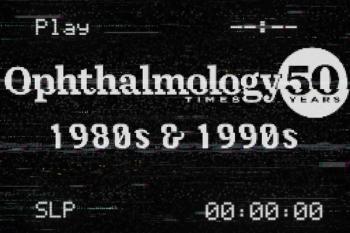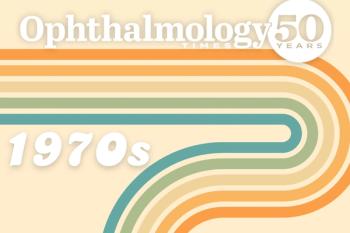
The OSD opportunity: Hard facts and a protocol for cataract patients
Editor’s Note: Welcome to “
Preoperative treatment of ocular surface disease (OSD) is an asset that many cataract surgeons tend to undervalue. I often talk to peers who treat OSD as a nuisance problem that gets in the way of them proceeding with the ultimate goal of cataract surgery, but for those of us who are outcomes-driven and see that those outcomes help build the reputation and good will we need to grow our practices, treating OSD prior to surgery is an important goal in itself, not a speed bump on the road to surgery.
Look at These Numbers
If you think treating OSD before surgery is a burden, consider these numbers:
- In Trattler’s landmark PHACO study,1 up to 76.8% of patients presenting for cataract surgery had some form of OSD. At least 50% of them had severe enough OSD central to the visual axis that could negatively affect surgical outcomes if it were left untreated.
- In my own practice, I treated patients with epithelial basement membrane dystrophy affecting pre-operative biometry with traditional dry eye therapies, superficial keratectomy, and placement of a cryopreserved amniotic membrane biologically active bandage (PROKERA, Bio-Tissue) for 5 days. After following this protocol, average Ks changed by at least 1D in 50% of patients and up to 2D in 19%. BCVA improved 1-2 lines. If we hadn’t treated the problem before surgery, inaccurate IOL powers would have led to refractive surprises after surgery.
As these studies help illustrate, by treating OSD, our practices accumulate better outcomes and happier patients, reduce costly postoperative chair time and enhancements, and get reimbursed for OSD treatment. It’s a win for patients, physicians, and our businesses.
Pre-Op Care for Mild, Moderate or Severe OSD
The first step in this process is to get patients to understand the importance of treating OSD before surgery. I tell my patients, “I’d rather do this the right way than the fast way. If a surgeon were to neglect treating this and rush you to cataract surgery, you would have less-than-ideal results and not be as happy as you should be. We want to do this right the first time.” Based on the severity of OSD – mild, moderate or severe – I follow a protocol to get the best achievable outcome.
- Mild OSD – The vast majority of my cataract patients with OSD have the mild form. A below-normal TBUT and clinical signs might indicate mild blepharitis, MGD or SPK. The traditional course of therapy (artificial tears, hot compresses, lid cleansers and nutraceuticals) is usually enough to optimize the ocular surface. If the patient’s OSD involves MGD, rosacea or evaporative dry eye, I may use intense pulsed light (IPL) therapy (M22 Optima IPL, Lumenis) to reduce lid and eye area telangiectasia and break the vicious cycle of inflammation. I try to get in as many IPL treatments as I can before the cataract surgery (spaced 2 weeks apart), but I generally don’t hold up cataract surgery for the IPL series. If I am concerned about biometric accuracy due to OSD, I use PROKERA to normalize the surface rapidly for cataract planning.
- Moderate OSD – These patients have mild corneal staining and mild to moderate blepharitis, SPK or MGD. There may be topographic changes on the cornea, such as irregular islands, areas of dropout where data are absent, or inconsistency between biometry modalities. The RMS value is below .4 and does not seem to affect the central 6mm zone. In addition to traditional therapies, I generally start these patients on a steroid taper, as well as an immunomodulator such as cyclosporine (Restasis, Allergan) or lifitegrast (Xiidra, Shire). I consider IPL, as well as thermal pulsation therapy (LipiFlow, J&J Vision) for more rapid treatment of MGD prior to surgery. For patients with moderate keratitis (PEK or SPK), I consider placing PROKERA for 3-5 days without a superficial keratectomy in the more severe eye, and then treating the second eye.
- Severe OSD – Patients with severe OSD may have moderate to severe staining inside the 6mm visual axis zone, significant topographical irregularities, pronounced inconsistency between modalities of biometry, an RMS value greater than .4, Salzmann nodular degeneration, or recurrent erosion syndrome.
I follow the same treatments as mild and moderate OSD, while adding other appropriate therapies. For example, I may combine treatments, following thermal pulsation therapy with IPL. For some patients, I combine superficial keratectomy with PROKERA. Not only is the intensity of treatment higher for severe OSD, but it also requires more time for therapies to produce optimal results. Hence, it is important to impress upon patients the value-added benefit of this optimization process in terms of better, more accurate outcomes and greater breadth of choice in lens implant opportunities.
Outcomes and post-op care
Postoperative care for OSD begins before surgery, when we teach patients that the problem is chronic and requires long-term treatment. My patients have a long-term plan before surgery, which usually involves continuing traditional at-home therapies and prescription medications. If they have had thermal pulsation therapy and/or IPL, they will return for follow-up sessions, which usually taper to once per year. Patients understand that we have optimized their ocular surface, delivered the surgical outcomes they desired, and now we need to keep their ocular surface healthy and clear.
In our practice, we have seen that optimizing the ocular surface elevates patient satisfaction and word-of-mouth referrals. It also boosts our rates of refractive cataract surgery. Before treating OSD, we would offer refractive surgery to about 50% of cataract patients, but after treatment, that number rises to about 90%. Patients get better outcomes not only thanks to more accurate biometry, but also because they have expanded access to high-technology lenses and procedures. When our patients have better vision and our practice is growing, we cannot look at treating OSD as a nuisance – it is most definitely an opportunity.
Disclosures:
Neel R. Desai, MD, is director of Cornea, Cataract, and Refractive Services at The Eye Institute of West Florida; medical director, Lions Eye Institute for Transplant Research; and president and CEO, Clarity Visionary Consulting. He is a consultant to Allergan, BioTissue, Lumenis, Johnson & Johnson Vision, and Shire.
References:
1. Trattler WB, Majmudar PA, Donnenfeld ED, McDonald MB, Stonecipher KG, Goldberg DF. The Prospective Health Assessment of Cataract Patients' Ocular Surface (PHACO) study: the effect of dry eye. Clin Ophthalmol. 2017;7(11):1423-1430.
Newsletter
Don’t miss out—get Ophthalmology Times updates on the latest clinical advancements and expert interviews, straight to your inbox.



















































.png)


